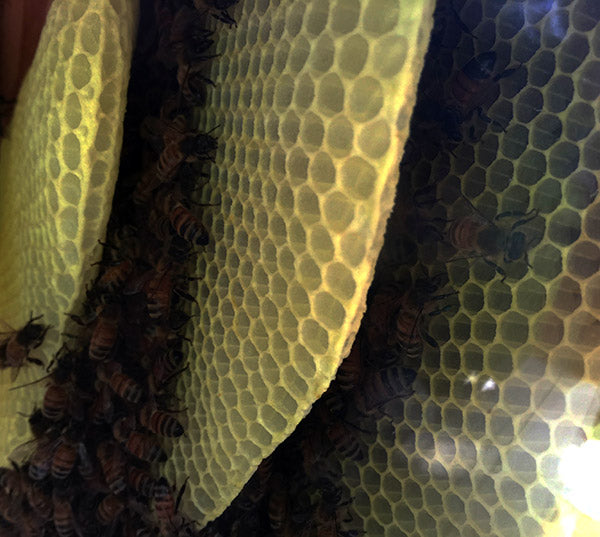Did My Bees Die?
It's the first week of December and after a week of single digit temperatures, the the cold breaks and the temps climb past the 50 degree mark. I look at the ground outside the hive and there are dead bees everywhere. I look in the window and see no sign of my bees. Did my bees die?

Bees on the ground outside hive from 'house cleaning' during winter warm days
I see Dead Bees in Front of My Hive, are my Bees Gone?
Most likely the bees are still in the hive and doing fine. When the cold temperatures arrive the bees go into hibernation. When there are a few warm days, the bees will clean out the bees that have naturally died of old age.
When the bees cluster in the winter, they will vibrate their flight muscles while keeping their wings still to raise their body temperatures. When thousands of bees are in the hive generating this warmth, they can keep the temperature at the center of the cluster to about 93° F. The bees in the center of the cluster generate the heat. On the outside of the cluster the bees create an insulation layer around the cluster. The bees then swap roles as producer or heaters. Bees will also use the empty cells of the highly insulative wax cells as sleeping bags. Going head first into the cell to stay warm.

Bees clustered inside comb cells in a top bar hive in the winter time
During winter warming spells, the entire cluster of bees will move within the hive repositioning the themselves around unused honey stores. This migration is a tricky time for the bees. The bees must move around the comb frames to the cold sides of the hive and then re-cluster before temperatures drop and their mobility is effected. During long spells of extreme cold, the bees may be unable to move within the hive to the honey stores. If the colony runs out of honey within the cluster, the bees can freeze to death just inches from their honey reserves. After studying hives of bees that did not overwinter, I have noticed that the frozen bees died during the transition to the new stores. I observed the dead bees at the sides of the hive, not having made it around the combs before they got caught by a sudden drop in temperature. Having observed this I was inspired to create the top bar “Passage Holes” we call the The Super HighwayThese holes help the bees efficiently transition to available honey stores without having to go around the combs to the cold side, but instead allow them to move through the holes in the middle to the hive.
I don't see any bees through the window and they are not flying during the warm winter days.
So are your bees really gone?

Honeybees outside hive on warm winter day
Often I observe one of my hives being very active during warm winter days, yet the hive right next to it stays in hibernation refusing to come out.
One reason for a lack of observable bees through the window may be that the cluster of bees is condensed inbetween the combs at the center of the hive. If your window is on the north side of the hive, it is quite possible that the bees are on the warmer south side of the hive, away from the window. On a chilly day the bees will be clustered towards the top of the hive and you can't see them from the observation window. The bees will also crawl into the empty comb cells to keep warm, so there will actually be a large number of bees clustered in the cells, adding to the illusion that the bees have vanished.
If you still want proof that the bees are in there, knock on the side of the hive and listen with your ear pressed against the hive. You will not hear the usual summer hum. You may just hear individual, intermittent buzzes. You can also blow into the hive (while wearing your veil !) and often the Co2 will cause them to get fussy and make some noise. Some of my bees get up and fly out during the warm winter spells, while others stay in hibernation and make me worry about them.



















